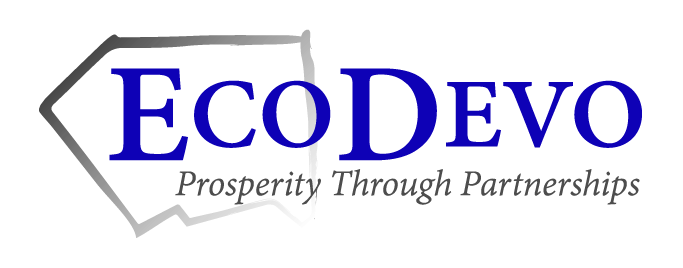Economic Development Strategies for Pottawatomie County, KS
The following sections address goals surrounding critical economic development areas in Pottawatomie County, KS. Our county economic development goals are centered around infrastructure and site development, workforce development, organization and regional development, business retention and attraction, and small business and entrepreneurial development. The scope of our economic development efforts includes community, county, and regional projects. A great deal of our regional development initiatives, including those centered around business retention and attraction, are carried out as joint efforts with the Greater Manhattan Economic Partnership.
For more details on the plans the PCEDC has developed around each goal, or to connect on your questions around doing business in Pottawatomie County, just contact our team. We’re happy to talk you through our goals for Pottawatomie County, and point you towards the numerous Pottawtaomie County, KS, businesses resources and incentives available to help achieve them.
Goal #1: Infrastructure and Site Development
Goal #1 is to develop a robust infrastructure network to provide high-quality business and industrial parks.
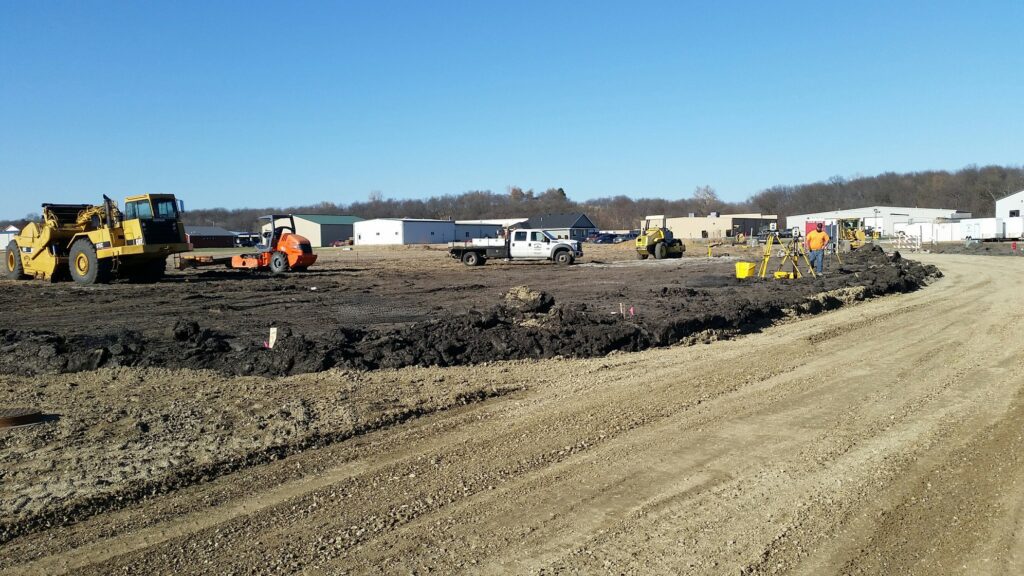

Objective A: Purchase and develop at least one new site and build an industrial park in phases, most likely in Wamego.
• Strategy 1: Work with the city and county on the development of a new site in proximity to Highway 24 (40-60 acres) that can become the preferred economic development catalyst in the two counties. Ensure that the site has adequate drainage and all utilities are in place in phases.
• Strategy 2: Continue to assist in the marketing and promotion of properties on the west and east side of Excel Road directly off of Highway 24 for industrial, commercial and office development.
• Strategy 3: Assist communities north of the 24 corridor in identifying potential industrial/commercial sites, like Onaga and Westmoreland, as well as to assist in Wamego and St. Marys.
Objective B: Work with county and city officials to enhance infrastructure in the county to further roads, water, sewer, etc.
• Strategy 1: Map existing and identify planned infrastructure; roads, streets, water, sewer, gas, electricity, hi-speed broadband telecommunications related to both existing and planned industrial and commercial development sites to determine if they meet the current and future needs in that sector by working closely with county staff using GIS where possible.
• Strategy 2: Identify infrastructure needs related to industrial and commercial development sites and work with public/private entities to identify necessary funds through USDA or other federal and state agencies to allow growth especially on Highway 24.
• Strategy 3: Continue to support comprehensive planning efforts and implementation in Onaga and Westmoreland, as well as encourage rural communities in the county to pursue comprehensive plans and assist with funding.
• Strategy 4: Examine the feasibility of the passage in the county of a half cents sales tax dedicated to infrastructure and in particular, infrastructure for a new PCEDC industrial/business park.
Objective C: Continue to advocate for more housing, for both workforce and management throughout Pottawatomie County.
• Strategy 1: Work closely with Workforce Housing Needs Study being completed by Flint Hills Regional Council as they finish completing housing study for Pottawatomie and Wabaunsee Counties.
• Strategy 2: Help to fund a study or report that demonstrates the financial benefits of residential housing and how it impacts real estate values and enhances sales tax revenues.
• Strategy 3: Examine, advocate and help to develop more senior housing in Pottawatomie County for the next 20 years.
Click the following links to view/download recent plan documents:
Goal #2: Workforce Development
Goal #2 is to develop long-term programs designed to enhance partnerships between business, education, and training officials and commit Pottawatomie County to a long-term program to enhance the availability, quality, and characteristics of the current and future workforce.
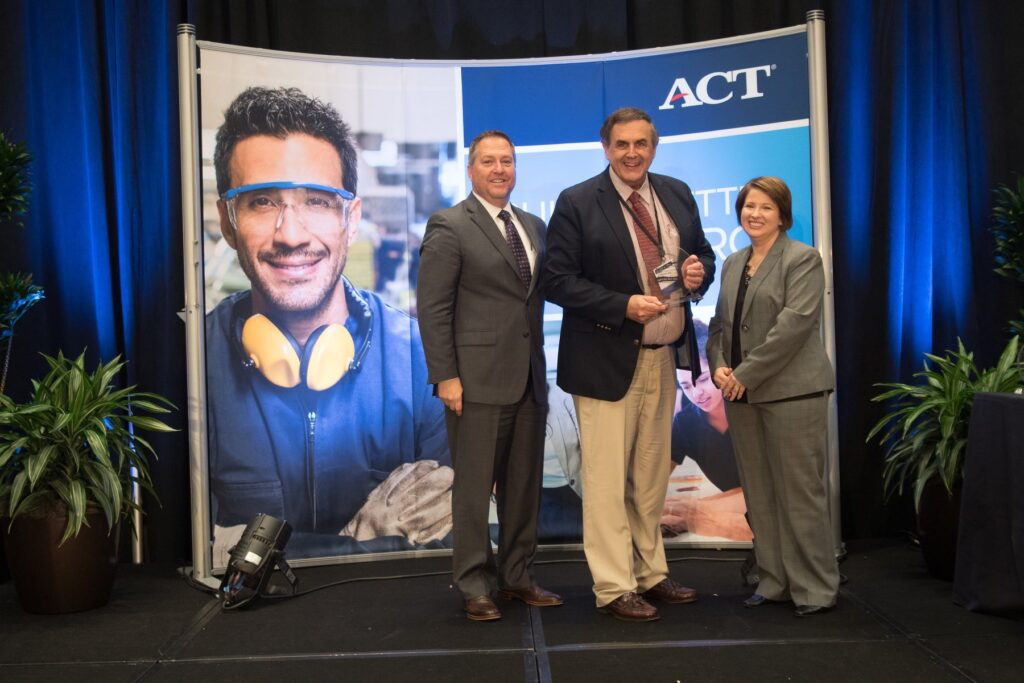

Objective A: Develop creative strategies to prepare young people for the workforce essentials of the 20th century.
• Strategy 1: Reestablish the Business Education Workforce (BEW) Roundtable. The Roundtable should consist of the education and training community, human resource managers (SHRM chapter), and other industrial leaders. Could be done in junction with Manhattan Area Chamber of Commerce.
• Strategy 2: Build upon the develop of the consensus developed through the Workforce Development Roundtable to plan workforce direction for the next five to ten years and continue with Workforce Crisis Summits.
• Strategy 3: Continue to work with Highland Community College, Manhattan Area Technical College (MATC) and/or Washburn Tech to develop additional programs for targeted industry, including welding and instrumentation training as well as allied health services.
Objective B: Continue to enhance the employability skills of the emerging, transitional and current workforce through the promotion and the development of the ACT Work Ready System, which offers a common language to identify skills gaps and provide training to improve scores and enhance employability by leveraging the National Career Readiness Certificate (NCRC), issued by ACT. The certificate is a portable, evidence-based credential that certifies essential skills needed for workplace success.
• Strategy 1: Continue to test all high school juniors on ACT Work Keys through Kansas Department of Education so students can earn the NCRC by taking three Work Keys assessments and, also conduct testing for current and transitional workers when requested.
• Strategy 2: Ensure that all students who earn NCRC are registered with Kansas Works and with ACT.
• Strategy 3: Continue to strive towards enhancing scores of all students with options in the Work Keys Curriculum, which provides a self-paced curriculum to help individuals fill their skills gap.
• Strategy 4: Continue to promote Work Keys and the NCRC so that business and industry know exactly what foundational skills they need for a productive workforce – and to easily communicate their needs and individuals understand what skills are required by employers – and how to prepare themselves for success and that policy makers consistently measure the skills gap in a timely manner at the national, state and local levels.
• Strategy 5: Promote NCRC, Work Ready Communities and Work Keys to industry both inside and outside the county so that they recognize the state of Kansas program through Kansas Works and the local Work Keys initiative of PCEDC and its thrust in maintaining a Certified Work Ready Community.
• Strategy 6: Continue to work with other counties in the state of Kansas in their efforts to become Certified Work Ready and build a significant data base of work ready individuals not only at Kansas Works but also on the ACT Work Ready Communities data base.
Objective C: Continue to develop long-term programs of enhancing youth awareness of careers and world of work.
• Strategy 1: Continue to encourage dual credit as a program for high school students and other programs in career technical education in all schools.
• Strategy 2: Support and assist in the development of internships and youth apprenticeships as well as other initiatives to enhance career viability for client youth.
• Strategy 3: Encourage and develop funding for teacher internships with Wamego industry and other teacher continuing education efforts working closely with the Wamego Chamber and human resource managers.
• Strategy 4: Enhance existing 4th grade Classroom to Careers “Adopt a School Classroom Program” and ensure that every school has exposure and potentially reach out to 8th grades.
• Strategy 5: Continue to support programs such as Senior Interview Day at both Rock Creek and Wamego High Schools as well as Peer Chamber initiatives.
• Strategy 6: Support all job fairs including Manhattan High School effort in concert with Manhattan Area Chamber of Commerce.
Objective D: Continue efforts to develop programs and initiatives by working closely with the Human Resource Management Network (HRMN, SHRM affiliate), the Manhattan Area Chamber of Commerce’s Region Reimagined talent attraction efforts, and Kansas Works.
• Strategy 1: Continue to support human resource managers and their firms across the board in their efforts to recruit and retain workforce.
• Strategy 2: Support and promote diversity and inclusion initiatives with HRMN and Kansas State University to assist in talent recruitment.
• Strategy 3: Use KSU Occupational Practical Training (F1) student visas to bring foreign base students into the workforce for up to two and a half years or more. Emphasize visa extensions in science, technology, engineering, and math careers.
• Strategy 4: Support continual and new creative methods to employ trailing spouses (Dual Career) of Fort Riley, KSU faculty, researchers, and administrators as well as HRMN member companies.
• Strategy 5: Continue to support efforts in mental health training as well as the employment of individuals with disabilities and ex-offenders.
Objective E: Continue the development of new and creative programs to enhance the availability and affordability of day care for children from birth to five years so there is growth in the labor force participation rate by young parents.
• Strategy 1: Continue the Child Care Task Force and its close association with Kansas State University Extension office to assist the childcare community and continue to educate the communities on the importance of childcare.
• Strategy 2: Continue to explore financing methods of enhancing training for childcare workers through potential state and federal funding.
• Strategy 3: Analyze and explore the feasibility of an Early Childhood Learning Center for low to moderate income families without financially impacting existing centers.
Goal #3: Organizational & Regional Development
Goal #3 is to continue to develop Pottawatomie County Economic Development Corporation by enhancing private and public sector collaboration, building local partnerships, and working closely with Regional entities and Chambers.
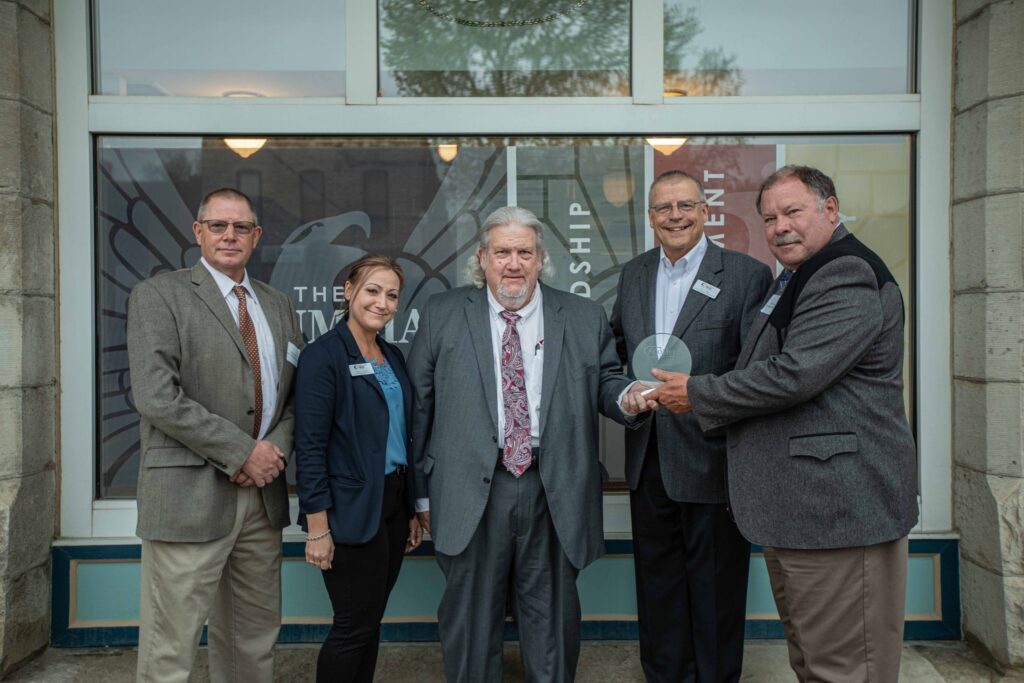

Objective A: Maximize Pottawatomie County Economic Development Corporation’s visibility and funding and enhance public relations programs.
• Strategy 1: Continue to inform Advanced Pottawatomie investors about PCEDC accomplishments and strategies with newsletters, social media and frequent one on one meetings.
• Strategy 2: Establish mechanisms to inform the general public with news releases and joint venturing with the Manhattan and Wamego Area Chambers of Commerce on various programs to enlighten others about PCEDC, including 30 second commercials through Prime Media.
• Strategy 3: Continue to hold annual investor receptions to inform investors first-hand on PCEDC developments and strategies and seek input. The events should take place in Manhattan and Wamego or St. Mary’s.
• Strategy 4: Continue working with Westmoreland, Onaga and St. Marys Chambers of Commerce on a regular basis and to become involved in their redevelopment efforts in order to promote growth in the rural areas of the county.
• Strategy 5: Purchase new office furniture in the future to demonstrate a more look and feel for the organization.
Objective B: Embark on a new private sector fundraising campaign or a program that demonstrates the $2 million/year tax revenue that the PCEDC industrial parks generate for the county and select cities each year.
• Strategy 1: Conduct a feasibility analysis with a reputable economic development fundraising firm to decipher the amount of money to be raised.
• Strategy 2: Establish a capital campaign committee with top business leaders and respected current and previous elected officials.
• Strategy 3: Develop rate of return on investment information as well as using the economic impact assessment completed on the industrial parks to demonstrate to investors the high value of PCEDC.
Goal #4: Business Retention & Attraction
Goal # 4 is to implement a strong business attraction target marketing program through the Greater Manhattan Economic Partnership utilizing the Avalanche Consulting methodology and a local creative agency and continue working with existing industry to create new employment and retain existing jobs.
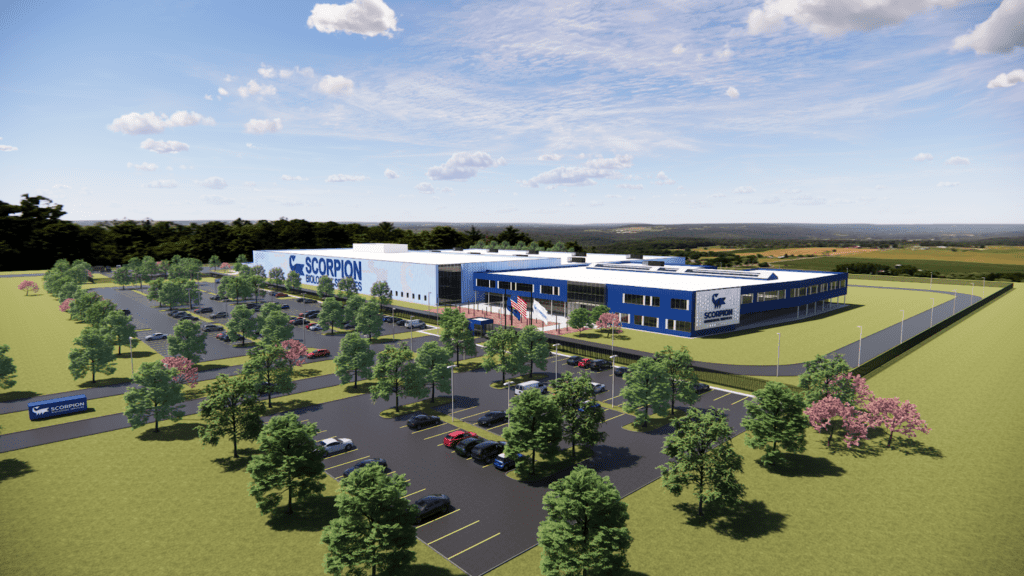

Objective A: Design and implement the targeted marketing program that effectively communicates the Greater Manhattan area’s assets to business leaders outside of the area in order to attract new industries in the following sectors:
1.) Animal Health and Science
2.) Crop and Grain Science & Milling
3.) Biosecurity and Food Science
4.) Computer Science & Information Technology
5.) Metal Fabrication and Machinery & Equipment
• Strategy 1: Rebuild the GMEP website making the information on its website more concise and compelling with bold headlines and bylines, impactful imagery and infographics will help communicate key messages in a more visual way.
• Strategy 2: Include more information on each of the region’s five target industries on the GMEP website. Be sure to include a mix of content like text, visuals, infographics, charts, maps, photos, videos, and more.
• Strategy 3: GMEP should have a social media presence it can share positive regional news with other partners or externally audiences easily and quickly. In addition, always seek media and develop a formalized news release system.
• Strategy 4: Working with creative agency develop target industry brochures for GMEP that are usually one or two pages and generally include minimal text with visually appealing infographics and pictures of the region.
• Strategy 5: Develop custom pitch decks for GMEP tailored to each target industry which are a useful and concise way to introduce prospects to the region. Custom pitch decks are best shared in person when prospects visit the region as an interactive presentation
• Strategy 6: Participate in state and regional organizations like Team Kansas with GMEP which gains maximum exposure for the state. Keep membership at the highest level and attend multiple sales missions.
• Strategy 7: Continue active participation in the Industrial Asset Management Council (IAMC) participating with site selectors and corporate real executives (including CAT and Hanesbrands) at the two IAMC conferences per year and continue to maintain strong site selector lists and contacts.
• Strategy 8: Identify geographies with a high concentration of target industry firms. Schedule strategic mission trips to these destinations to meet directly with businesses in these sectors.
• Strategy 9: GMEP should develop a set of metrics that include:
o Prospect inquiries by target industry
o Leads by target industry
o Visits by target industry
o Project wins by target industry
o Job growth and capital investment by target industry
o Number of project materials distributed to prospects
o Number of inquiries from site selectors
o Number of referrals from regional partners
o Success regarding existing target industry business growth
o Any awards, positive rankings, or recognition received by the community
o Number of new marketing materials or tactics developed each year
• Strategy 10: Stay active and invested in Knowledge Based Economic Development (KBED) and further promote the group to become more active in projects that will impact Pottawatomie County and stimulate further growth and development.
Objective B: Continue to develop the strong business retention expansion program by actively continuing building relationships with existing industry in Pottawatomie County.
• Strategy 1: Continue existing business one on one in person calls at the company place of business and discuss key competitive issues impacting the industry and community.
• Strategy 2: Continually refresh the existing industry survey updating with new items and working closely with the Manhattan Area Chamber of Commerce on overlapping companies and PCEDC relationships.
• Strategy 3: Work with the Manhattan Area Chamber to develop a “triggered hot response” system. This system is designed to immediately assist an industry when a “red flag” economic development need arises.
• Strategy 4: Attend and stay active with industry associations, including the Human Resource Management Network (SHRM affiliate), the Flint Hills Area Builders Association and others.
Goal #5: Small Business Development & Entrepreneurship
Goal #5 is to continue to develop programs for small and new business as well as supporting their efforts for legislation and advocacy and working closely with existing resources.
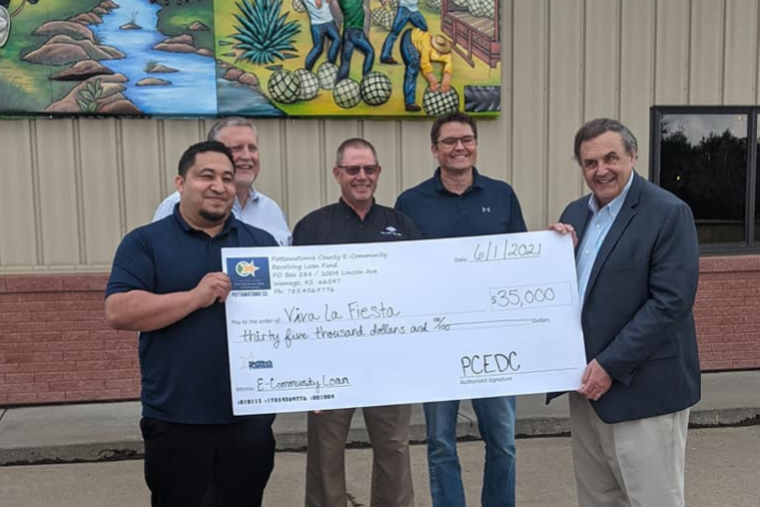

Objective A: Continue to work closely with Network Kansas on their programs and participate in loan programs and small business development.
• Strategy 1: Continue to develop use of the E-Community Revolving Loan Fund which is available to start-ups and other small businesses for gap financing. In addition, utilize the Startup Kansas loan fund as much as possible and continuously inform financial institutions about our lending capacity.
• Strategy 2: Promote other Network Kansas programs such as Kansas Ice House and Destination Bootcamp where entrepreneurs gain significant knowledge about an entrepreneurial mindset and marketing development.
• Strategy 3: Continue to support and administrate the Youth Entrepreneurship Challenge (YEC) with all high schools in cooperation with Network Kansas.
• Strategy 4: Continue to examine the feasibility of developing a fab lab/maker space in Pottawatomie County.
• Strategy 5: Continue the financial support of the Washburn Small Business Development Center having them developing more seminars and workshops to benefit small businesses in Pottawatomie County.
• Strategy 6: Continue to promote the “Value Builder” program through the Small Business Development Center for business succession planning.
Objective B: Support programs to assist tourism, history and agriculture that will benefit small businesses and target new retail opportunities that will enhance the tax base in Pottawatomie County.
• Strategy 1: Financially support tourism/visitor opportunities in Pottawatomie that demonstrate economic value for a community by examining rate of return for each event. Events such as the Wamego Tulip Festival, Shakespeare Festival, the Westmoreland Barbeque and the Pottawatomie County Fair qualify.
• Strategy 2: Support eco-tourism programs, such as the Kansas River bicycle trail by seeking more funding and reviewing grant opportunities with the Flint Hills Regional Council and ag-tourism businesses such as the 456 Winery and Bluestem Orchards as well as ag-tourism events.
2021 Annual Report
The full 2021 annual report addresses all of these goals and the PCEDC’s related activities:
2020 5-Year Implementation Plan
The PCEDC also developed an implementation plan related to Pottawatomie County development goals:
